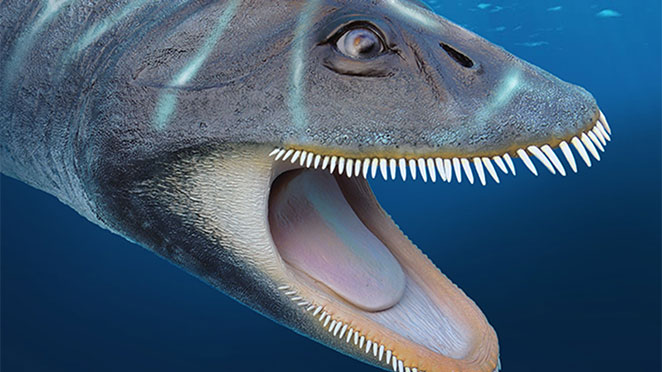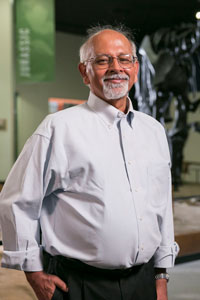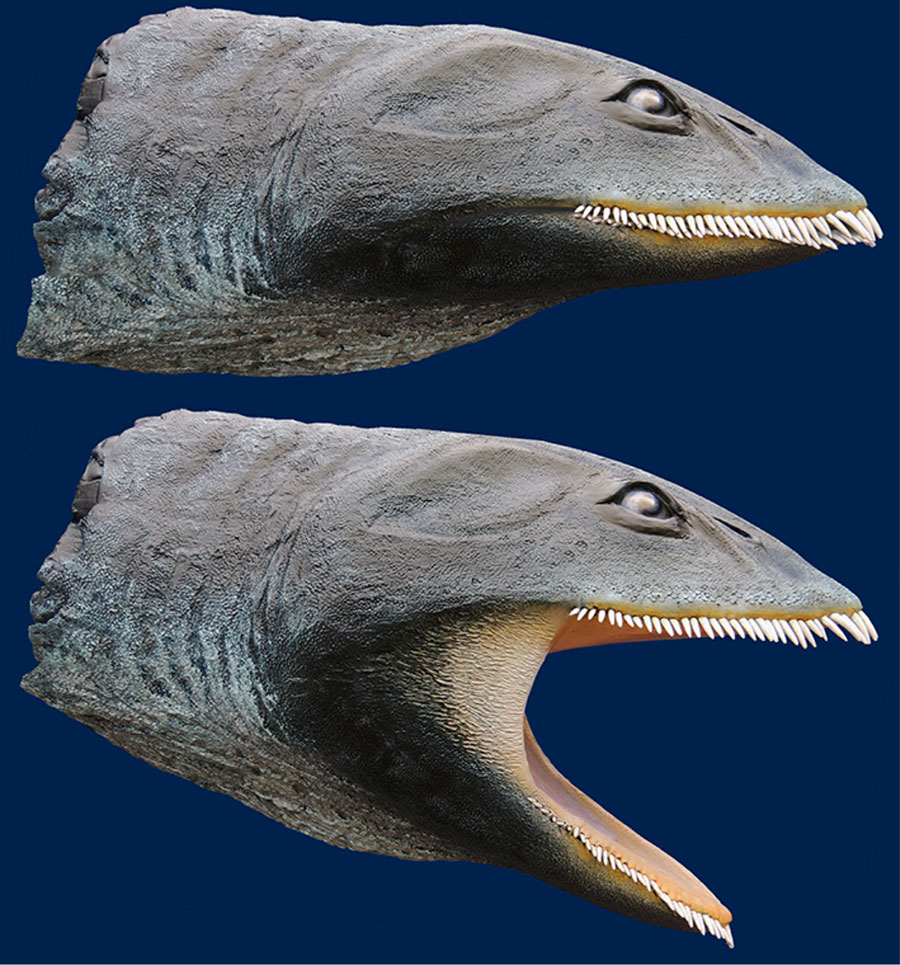Texas Tech Paleontologist Aids in New Discovery 33 Years after Finding Fossil
By: Glenys Young

In 1984, Sankar Chatterjee, curator of paleontology for the Museum of Texas Tech University, and his student, Bryan Small, made an astounding discovery.
Working on Seymour Island in Antarctica, they uncovered the fossilized skull of an animal they'd never seen before. While it was obviously a plesiosaur – a Cretaceous-period marine reptile scientists first discovered in the early 1600s – this plesiosaur was unlike any previously found. They named the new species Morturneria and brought its skeleton back to the Museum of Texas Tech.
Now, 33 years later, Chatterjee and his team have made a new discovery about Morturneria, one that adds a whole new dimension to science's understanding of plesiosaurs – and larger than that, to the understanding of evolution itself.
More than 65 million years ago, the Earth's oceans were populated with many animals still found there today, like fish, krill and sharks. But one of the oceans' biggest predators, the plesiosaurs, went extinct at the same time as the dinosaurs on land.

“Often, plesiosaurs are called sea monsters,” said Chatterjee, a Horn Professor in the Department of Geosciences. “They were large – 50 feet long, superb swimmers and occupied the top of the marine food chain. Although dinosaurs are very familiar to everyone, during their days, the sea was ruled by these monster-like plesiosaurs. Like dinosaurs on land, they dominated the sea from Arctic to Antarctic waters.”
Plesiosaurs had a broad, flat body and short tail, four long flippers they used to “fly” through the water, long necks and very sharp teeth.
“The teeth of most plesiosaurs are conical, stout, sharp, robust and ideal for stabbing and killing large animals,” Chatterjee said.
But as he wrote in his 1984 paper announcing Morturneria's discovery, “the long, slender and delicate teeth may have formed a ‘trapping' device that enabled (the animals) to feed on small fish and crustaceans that abound in the same deposits.”
This notation led an international team of Chilean, Argentinian and American paleontologists to take a closer look at Morturneria's teeth.
“In our 1984 paper, we described the unusual teeth of Morturneria and their probable function,” he said. “However, our new international team, who had worked on plesiosaurs from many continents, found them fascinating and unique.”
Chatterjee and the team reconstructed Morturneria with a large, round head, a huge mouth and tiny teeth that point the wrong way. The teeth did not meet tip to tip as in all other plesiosaurs, but lay together in a battery that strained food particles from the water.

“When the jaw was closed, teeth from the upper and lower jaws formed a nice trap,” Chatterjee said. “Basically, the animal would swallow a school of krill, close the jaws to let the water out, but keep the krill inside for chewing and swallowing. With these kind of interdigitating delicate teeth, the animal could not tackle the large fish or shelled animals (called ammonites) that were the favorite foods of most plesiosaurs.”
The team's finding, published in the Journal of Vertebrate Paleontology, is that Morturneria used a filter-feeding method. This feeding style is unknown in other marine reptiles but is found in today's baleen whales. F. Robin O'Keefe of Marshall University was the article's lead author.
The identification of Morturneria's whale-like filter feeding is a startling case of convergent evolution between reptiles and mammals. Plesiosaurs and whales shared many of the intervening steps in the evolution of this feeding style and their extreme morphologies are similar despite arising from different ancestors.
Chatterjee stresses convergent evolution does not imply Morturneria was in any way related to today's baleen whales; it just means they both evolved the same way.
“They had adopted similar lifestyle and feeding,” he said. “For example, birds and bats fly, but birds are now considered dinosaurs and bats are mammals. These superficial similarities of lifestyles and behavior are called ‘convergent evolution.'”
Discoveries
-
Address
Texas Tech University, 2500 Broadway, Box 41075 Lubbock, TX 79409 -
Phone
806.742.3905 -
Email
vpr.communications@ttu.edu
